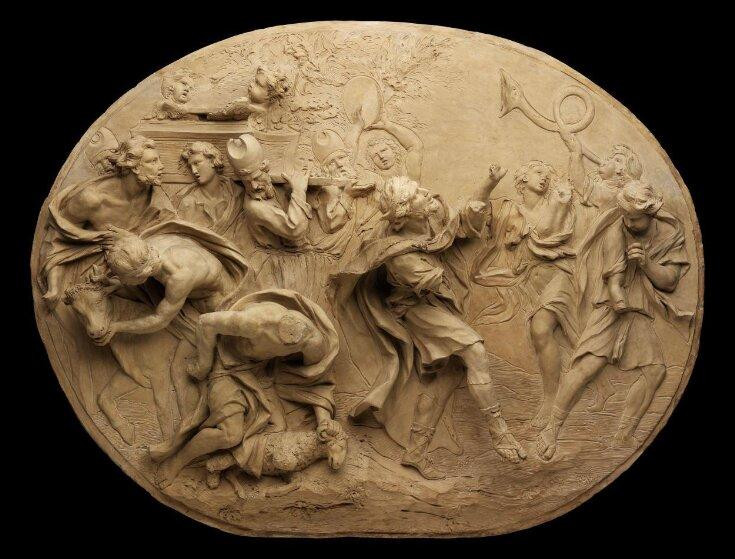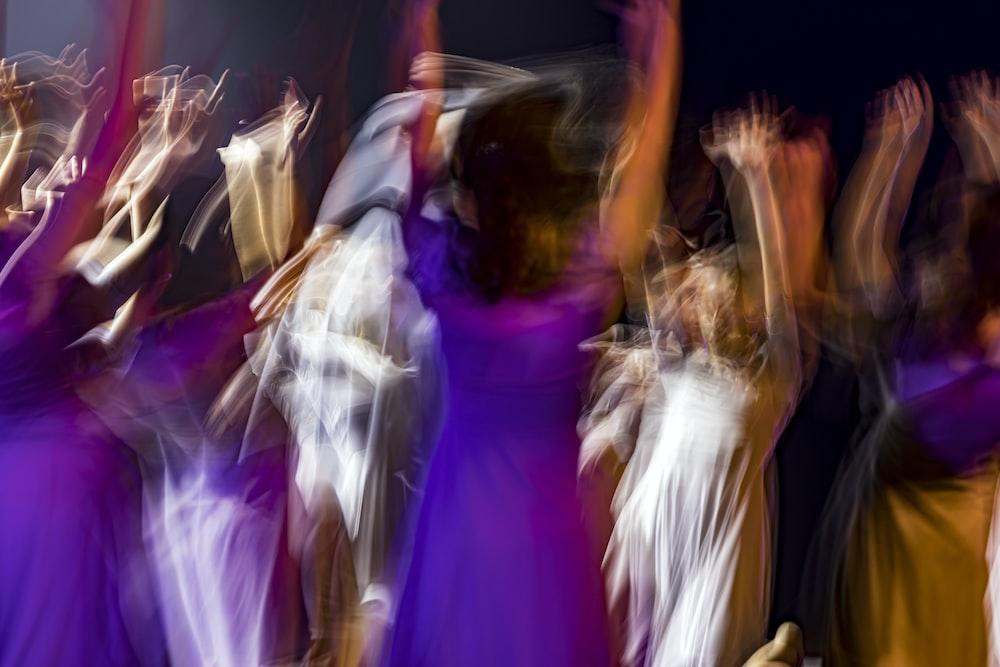Christian culture is rich with traditional sayings, often inspired by Psalms, liturgies, and Biblical narratives, as well as societal norms. You might hear phrases that seem like they should be Bible verses, but aren’t, like, “Cleanliness is next to godliness.” Similarly, the saying, “He danced without leaving room for Jesus,” or “She is dancing without leaving room for Jesus,” is a common phrase, yet you won’t actually find it in scripture. So, where does this popular Christian saying originate, and What Does Dancing Without Leaving Room For Jesus Mean?
When someone says, “They danced without leaving room for Jesus,” they are implying that a couple was dancing very closely, with minimal space between their bodies. The cultural expectation within some Christian circles is that men and women should maintain enough physical distance while dancing to theoretically fit another person between them. This imagined extra person is humorously suggested to be Jesus. The underlying idea is that improper behavior is less likely to occur under the metaphorical supervision of Jesus Christ.
Leaving Room for Jesus and the Value of Purity
In many Christian communities, physical and moral purity is a highly regarded virtue. Purity encompasses various aspects, but sexual purity is particularly emphasized in the Bible as a way to honor God through our bodies. The Apostle Paul addresses this directly in 1 Corinthians 6:18-20, advising, “Flee from sexual immorality. Every other sin a person commits is outside the body, but the sexually immoral person sins against his own body. Or do you not know that your body is a temple of the Holy Spirit within you, whom you have from God? You are not your own, for you were bought with a price. So glorify God in your body.”
Interpretations of “sexual immorality” can vary among Christians. However, traditional Christian doctrine generally teaches that sexual intimacy is reserved for marriage. Consequently, any physical closeness that could lead to premarital sexual activity is often considered sinful. This is the context in which the phrase “leave room for Jesus” becomes relevant, extending beyond just dance partners. You may hear variations of this saying in numerous situations:
- Leave room for Jesus.
- Save room for Jesus.
- Make room for Jesus.
This advice is not limited to the dance floor. Regardless of the setting, the principle remains the same. Sitting together on a couch? Make room for Jesus. Sharing a booth at a restaurant? Leave room for Jesus. Spending time alone at home? Save room for Jesus.
The intention behind “leaving room for Jesus” is to avoid temptation. The idea is that by maintaining physical distance, the likelihood of inappropriate physical intimacy is reduced. By figuratively placing Jesus between a couple, it’s hoped they will be more mindful of their actions and less inclined to engage in activities that compromise their purity. This adds a spiritual dimension to physical boundaries, suggesting a supernatural guide in maintaining holiness in relationships.
However, it’s important to acknowledge that not all interactions between couples are inherently sinful, and not every form of affectionate touch is inappropriate. Dancing, though, is often viewed as a potentially risky activity for Christians committed to upholding standards of purity due to its physical nature and potential for intimacy.
 Couple ballroom dancing in a dimly lit room, suggesting romance and closeness, prompting the question of 'leaving room for Jesus'.
Couple ballroom dancing in a dimly lit room, suggesting romance and closeness, prompting the question of 'leaving room for Jesus'.
The Roots of “Dancing Without Leaving Room for Jesus”
Dance, by its nature, can be a very sensual and expressive art form. In the animal kingdom, dance is frequently observed as a critical component of courtship rituals. Successful mating displays in animals often involve elaborate dances designed to attract a partner. Similarly, human dance can also be used to attract a partner, yet it also serves as a harmless form of social engagement. These dual aspects of dance – its potential for both innocent social interaction and sensual expression – create a dilemma for some Christians, leading to hesitation about participating in dance. Thus, the phrase “leave room for Jesus” likely emerged as a way to establish clear and healthy boundaries for believers, particularly in social settings involving music and movement.
The precise historical origins of the saying “danced without leaving room for Jesus” are not well-documented. Given that many faiths emphasize purity standards, it’s logical that similar phrases would develop across different religious and cultural contexts to communicate expectations around modesty and appropriate behavior.
It’s speculated that the phrase gained prominence during one of the sexual revolutions of the 20th century. Periods of increased social permissiveness, such as the Roaring Twenties, the sexual revolution of the 1960s, and the 1990s, saw shifts in societal attitudes towards sexuality. During these times, more conservative Christian communities sought to protect their youth from what they perceived as the moral decline associated with dance halls and secular perspectives on human sexuality.
These cultural shifts were catalysts for various purity movements within Christianity, including the rise of purity pledges, purity rings, and purity balls, particularly in the 1990s. Creating phrases like “leave room for Jesus” was likely one of the strategies employed during these eras to reinforce traditional values and boundaries in the face of changing social norms.
Modern Interpretations of Leave Room for Jesus
Today, while you may still hear the phrase “They danced without leaving room for Jesus” or “Save room for Jesus,” its usage has often evolved beyond a strict admonition for physical purity. It’s now frequently used satirically or humorously, often in a self-aware or ironic way.
The phrase has permeated popular culture, appearing in diverse contexts such as an episode of the acclaimed ABC television show, Black-ish, and as a widely circulated online meme. The popular movie Footloose, while not directly using the phrase, explores similar themes of a conservative community grappling with the perceived corrupting influence of dance on young people’s morals.
More recently, churches and religious organizations have creatively repurposed “leave room for Jesus” to promote social distancing during the COVID-19 pandemic. Posters and social media campaigns humorously used the phrase to encourage congregants to maintain physical distance to curb the virus’s spread, giving the old saying a fresh, public health-oriented meaning.
The variation “make space for Jesus” is also gaining traction, encouraging individuals to make room for Jesus’s influence in their increasingly busy and distracted lives. In a world filled with demands on our time and attention, this adaptation serves as a relevant reminder for believers to prioritize their spiritual lives and create space for faith in their daily routines.
Dancing in the Bible: Examples and Context
Dancing is a recurring activity throughout the Bible, deeply embedded in Hebrew culture. It served as a significant form of worship and praise to God, as well as a way to celebrate festivals and victories. The Bible presents a nuanced view of dance, showcasing both its sacred and secular uses.
Biblical Figures Who Danced for God
Miriam, the sister of Moses, is famously depicted leading women in dance and song to celebrate God’s miraculous parting of the Red Sea. Exodus 15:20 recounts, “Then Miriam the prophetess, Aaron’s sister, took a timbrel in her hand, and all the women followed her, with timbrels and dancing.” This instance highlights dance as an expression of jubilant praise and thanksgiving to God for deliverance.
Following David’s triumph over Goliath, women emerged from Israelite cities, singing and dancing to greet King Saul, as recorded in 1 Samuel 18:6-7. “When the men were returning home after David had slain Goliath, the women came out from all the towns of Israel to meet King Saul with singing and dancing, with joyful songs and with timbrels and lyres. As they danced, they sang: ‘Saul has slain his thousands, and David his tens of thousands.’” This illustrates dance as a communal expression of joy and celebration of military victory, intertwined with musical praise.
 King David dancing with full abandon and joy before the Ark of the Covenant, a powerful image of worshipful dance from the Bible.
King David dancing with full abandon and joy before the Ark of the Covenant, a powerful image of worshipful dance from the Bible.
King David’s dance before the Lord when the Ark of the Covenant was returned to Israel is perhaps the most iconic example of dance in the Bible. 2 Samuel 6:14-17 describes David’s exuberant worship: “David, wearing a linen ephod, danced before the Lord with all his might. So David and all Israel brought up the ark of the Lord with shouts and the sound of trumpets. As the ark of the Lord was entering the City of David, Michal daughter of Saul watched from a window. And when she saw King David leaping and dancing before the Lord, she despised him in her heart. They brought the ark of the Lord and set it in its place within the tent that David had pitched for it, and David sacrificed burnt offerings and fellowship offerings before the Lord.” David’s unrestrained and passionate dance, even to the point of his wife Michal’s disapproval, underscores dance as a profound act of devotion and worship.
The prophet Jeremiah also speaks of dancing as a form of praise in times of restoration and joy. Jeremiah 31:4 proclaims, “Again I will rebuild you and you will be rebuilt, O Virgin Israel. Again you will take up your timbrels and go out to dance with the joyful.” And Jeremiah 31:13 adds, “Then young women will dance and rejoice, and young men and old as well. I will turn their mourning into gladness; I will give them comfort and joy instead of sorrow.” These verses portray dance as a symbol of renewed joy and spiritual restoration.
Ecclesiastes 3:1, 4 acknowledges the appropriateness of dance within the broader spectrum of human experience: “There is a time for everything, and a season for every activity under the heavens: … a time to weep and a time to laugh, a time to mourn and a time to dance.” This verse places dancing within the natural rhythm of life, recognizing its place alongside other emotional expressions.
Several Psalms explicitly encourage dance as a form of praise. Psalm 149:3 urges, “Let them praise his name with dancing and make music to him with timbrel and harp.” Psalm 150:4 further exhorts, “Praise him with timbrel and dancing; praise him with the strings and pipe!” These Psalms directly command believers to use dance as a way to praise and worship God, alongside musical instruments.
Sinful Dancing in Biblical Contexts
The Bible also presents instances where dancing is associated with sin and idolatry. The story of the golden calf in Exodus 32:19 describes the Israelites dancing before an idol: “When Moses approached the camp and saw the calf and the dancing, his anger burned and he threw the tablets out of his hands, breaking them to pieces at the foot of the mountain.” Here, dance is linked to idolatrous worship and a departure from God’s commandments, provoking divine anger.
 A depiction of sinful dancing around the Golden Calf, highlighting the negative portrayal of dance associated with idolatry in the Bible.
A depiction of sinful dancing around the Golden Calf, highlighting the negative portrayal of dance associated with idolatry in the Bible.
Another example of idolatrous dance is found in 1 Kings 18:26, during Elijah’s confrontation with the prophets of Baal on Mount Carmel. “So they took the bull given to them and prepared it. Then they called on the name of Baal from morning till noon. ‘Baal, answer us!’ they shouted. But there was no response; no one answered. And they danced around the altar they had made.” In this context, dance is depicted as a futile and desperate act of pagan worship, contrasting sharply with true worship of God.
The story of Herod and Salome in Mark 6:22, 25 illustrates dance leading to tragic consequences. “When his daughter Herodias came in and danced, she pleased Herod and his dinner guests. The king said to the girl, ‘Ask me for anything you want, and I’ll give it to you’…She went out and said to her mother, ‘What shall I ask for?’ ‘The head of John the Baptist,’ she answered. At once the girl hurried in to the king with the request: ‘I want you to give me John the Baptist’s head on a platter right now.’” Salome’s seductive dance, though admired by Herod, becomes a tool for manipulation and ultimately results in the unjust execution of John the Baptist, highlighting the potential for dance to be used for immoral purposes.
These biblical examples demonstrate that dance itself is morally neutral. It can be used to glorify God or to offend Him, depending on the intent, context, and manner in which it is performed. Discernment is therefore essential for Christians to understand how dance fits into their spiritual lives.
Did Jesus Himself Dance?
Jesus Christ is the ultimate role model for Christian living. Looking to His example is crucial for understanding Christian conduct. So, did Jesus dance? The Bible does not explicitly state whether Jesus danced or not. However, we know Jesus was Jewish, and dance was an integral part of Jewish culture during His time. It’s plausible that Jesus participated in celebratory dances appropriate to His cultural context, especially at joyful occasions like weddings. Notably, Jesus attended a wedding in Cana, where He performed His first miracle (John 2). Jewish weddings were festive, multi-day celebrations, and likely included traditional dances in which Jesus might have participated.
Jesus also indirectly referenced dancing in Luke 7:31–32, when critiquing the unresponsiveness of His generation: “To what then can I compare the people of this generation? What are they like? They are like children sitting in the marketplace and calling out to each other: ‘We played the pipe for you, and you did not dance; we sang a dirge, and you did not weep.’” In this analogy, Jesus uses dancing as a natural and expected response to joyful music, suggesting it was a common and understood social practice.
 A person dancing joyfully facing the sky, symbolizing dancing for Jesus with freedom and expression.
A person dancing joyfully facing the sky, symbolizing dancing for Jesus with freedom and expression.
Dancing for Christ: Honoring God in Motion
The style of dance Jesus might have engaged in would likely differ from contemporary dance forms. Jewish tradition for centuries prohibited mixed-gender dancing due to concerns about inappropriate physical contact. During Jesus’s time, scrutiny over physical intimacy between men and women was exceptionally strict. So, while Jesus may have danced, it would have been within the bounds of these cultural and religious norms.
What does this imply for the phrase “dancing without leaving room for Jesus”? It suggests that there is a way to dance that honors God and aligns with Christian values. Paul’s guidance in 1 Corinthians 10:31 offers a helpful principle for Christians: “So whether you eat or drink or whatever you do, do it all for the glory of God.” Unmarried individuals can engage in dance without compromising their commitment to sexual purity. “Leaving room for Jesus” doesn’t need to be interpreted as a literal measure of physical distance between dance partners. Instead, it serves as a reminder to ensure we are “saving space” for Jesus in all aspects of our lives, including our social interactions and recreational activities. By submitting to the Holy Spirit’s guidance and asking, “Does this action honor God?” Christians can discern how to dance—and live—in a way that truly reflects their faith and devotion to Christ.


